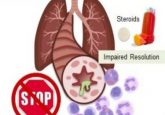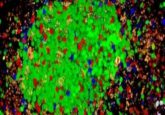Can we turn back time on age-associated diseases?

New research demonstrates that it may be possible to turn back the clock on age-associated diseases linked to chronic inflammation.
A recent study, led by researchers at the University of California, Berkeley (USA), has discovered that dysregulation of the NLRP3 inflammasome can contribute to age-associated chronic inflammation. The findings, published in Cell Metabolism, highlight a molecular switch that could be exploited to reverse age-associated diseases.
The NLRP3 inflammasome is a protein complex that induces inflammation via the release of proinflammatory cytokines in response to potentially threatening stimuli.
Chronic inflammation has been shown to occur at a greater rate as individuals age and is caused by overactivation of the immune system. Chronic inflammation has been indicated as a factor in a variety of diseases, including Alzheimer’s, Parkinson’s, diabetes and cancer.
“In the past, we showed that aged stem cells can be rejuvenated. Now, we are asking: to what extent can aging be reversed? And we are doing that by looking at physiological conditions, like inflammation and insulin resistance, that have been associated with aging-related degeneration and diseases,” explained the study’s senior author, Danica Chen (University of California, Berkeley).
 Designing better treatments for aging
Designing better treatments for aging
Treatments for aging and cancer could be improved thanks to new senescence research. While most research into senescence has focused on fibroblasts, new research has turned the spotlight on epithelial cells, where most cancers arise.
Utilizing murine models and a cell-based system to model aging-associated inflammation, Chen and the team identified the NLRP3 inflammasome as a key mediator of chronic inflammation and found that deacetylation could be used to ‘switch it off’.
It was demonstrated that SIRT2, an NAD+-dependent deacetylase, regulates the NLRP3 inflammasome via deacetylation. Mice bred to not express the SIRT2 protein exhibited higher levels of inflammation at 2-years-old when compared with controls, as well as higher insulin resistance, a condition linked to type 2 diabetes and metabolic syndrome.
Irradiated older mice that produced the deacylated NLRP3 inflammasome demonstrated improved insulin resistance after 6 weeks, suggesting that reversal of age-associated conditions is possible via the control of this immune pathway.
“I think this finding has very important implications in treating major human chronic diseases,” Chen commented. “It’s also a timely question to ask, because in the past year, many promising Alzheimer’s disease trials ended in failure.”
These findings demonstrate the utility of deacetylation as a control for the NLRP3 inflammasome, revealing the potential for the development of drugs targeted towards switching off the inflammasome for the prevention or treatment of age-associated diseases.





